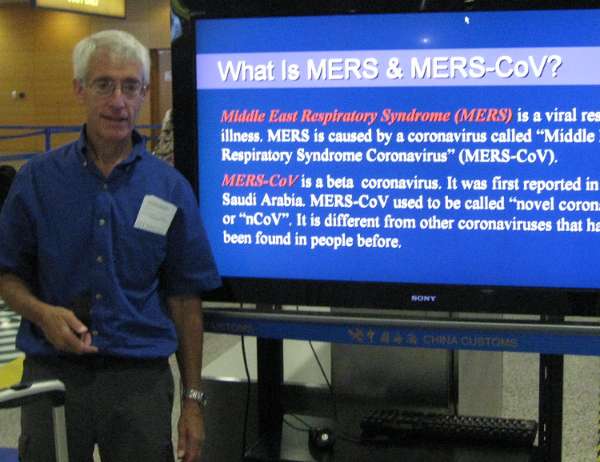Scientific curiosity and preparedness for emerging pathogen outbreaks

An essay published on July 14th in PLOS Pathogens' new "Research Matters" series reflects on a career path that started with the study of a somewhat obscure mouse virus mice and ended up at the frontline of the SARS and MERS coronavirus epidemics.
His curiosity about basic cell biology and the desire to understand the devastating effects of viruses on the developing human brain led Stanley Perlman, from the University of Iowa's Carver School of Medicine, Iowa City, USA, to dedicate the work of his research group to the study of a virus that infects the mouse brain, murine hepatitis virus (MHV), a member of the coronavirus family, and the mammalian immune response to it.
Their work showed that while the immune response to MHV infection is essential to controlling the infection, it is also responsible for many of the clinical symptoms that occur, including the destruction of a certain type of nerve cell. Incidentally, these results from the mouse model studies stem turned out to be highly relevant to the human multiple sclerosis.
Perlman and colleagues also showed that the immune response to MHV involves an intricate interplay of different immune cells, and that unless it is dampened appropriately after the initial destructive attack on the invading virus, some of these cells will damage and even destroy the host's own tissues. A key role in controlling the immune response, they found, was played by so-called "regulatory T cells", a finding that is now well-established and central to many current approaches to prevent or treat autoimmune and other inflammatory diseases.
The study of coronaviruses became even more directly relevant to human public health in 2003 when the SARS epidemic hit, and the ongoing MERS outbreak corroborates that coronaviruses can and will likely continue to jump the species barrier infect humans, and cause serious disease.
As Perlman states, while "until the early 2000s, coronaviruses were not considered important human pathogens", the main reason for "rapid progress in understanding SARS and MERS and in developing vaccines and therapies was existing knowledge gained from studies of MHV and other animal coronaviruses".
Besides MHV, Perlman's laboratory now also studies three human coronaviruses and has developed a mouse model for MERS. His "journey from studies of murine coronaviruses to those of serious human pathogens", he says, illustrates the importance of research driven initially by curiosity". "It is only through basic research into these pathogens", he concludes, "that we will be prepared for future outbreaks".
More information: Perlman S (2015) Research Driven by Curiosity: The Journey from Basic Molecular Biology and Virology to Studies of Human Pathogenic Coronaviruses. PLoS Pathog 11(7): e1005023. DOI: 10.1371/journal.ppat.1005023



















